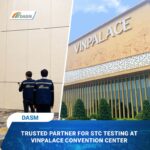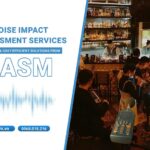DASM Institute, a leading authority in the field of acoustics, has recently completed a project involving noise survey and evaluation, and building acoustic design for a research lab meeting international acoustic standards, commissioned by a major U.S.-based semiconductor manufacturer.

Project overview
In the semiconductor manufacturing sector, technical requirements for work environments – especially research and development (R&D) areas and product inspection labs are becoming increasingly stringent.
One of the key factors influencing the performance of these rooms is their acoustic characteristics. Recognizing this, DASM Institute successfully conducted an noise survey and evaluation, as well as implemented a retrofit design to bring a research lab up to international acoustic standards for a U.S.-invested semiconductor manufacturer located in Bien Hoa 2 Industrial Park, Dong Nai Province.
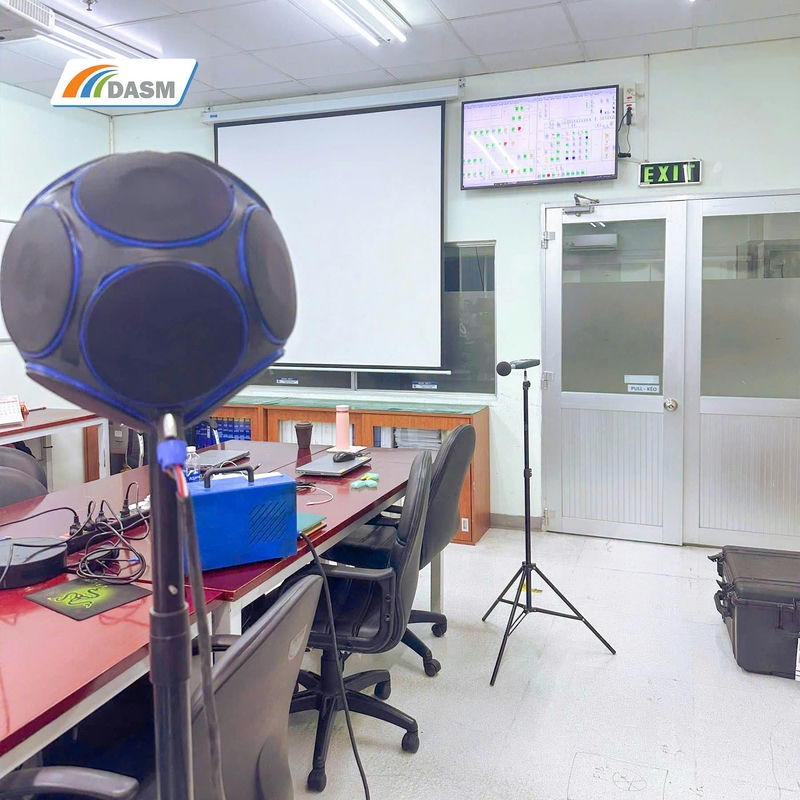
This manufacturer is one of the global leaders in the semiconductor field, specializing in:
- Hybrid Integrated Circuits
- Discrete semiconductors for automotive, small signal, analog signal, and mixed logic circuits
- Semiconductor devices for both consumer and industrial applications
The project involved retrofitting the existing research and laboratory space to meet international acoustic standards, including background noise control, sound insulation, and reverberation management.
Noise survey and evaluation process
DASM’s engineering team carried out a comprehensive survey, strictly adhering to international standards to ensure the highest levels of precision and reliability:
- Background noise level measurement
Background noise was measured at various locations within the lab, with each point recorded continuously for 10 minutes. The goal was to determine the average ambient noise level and assess its potential impact on sensitive measurement instruments.
- Sound insulation evaluation
Sound transmission through walls, ceilings, doors, and adjacent structures was evaluated. Analysis of Sound Transmission Class (STC) and Weighted Sound Reduction Index (Rw) was conducted to assess the facility’s existing sound insulation performance.
- Reverberation time measurement (RT60)
Reverberation time is one of the most critical indicators of a room’s acoustic quality. DASM employed the RT60 method to evaluate the reflection and absorption of sound within the space.
- Measurement of noise from electromechanical equipment
Major noise sources such as chillers and motors were measured using specialized instruments. This helped identify unwanted sound emissions that could compromise the accuracy of research activities.
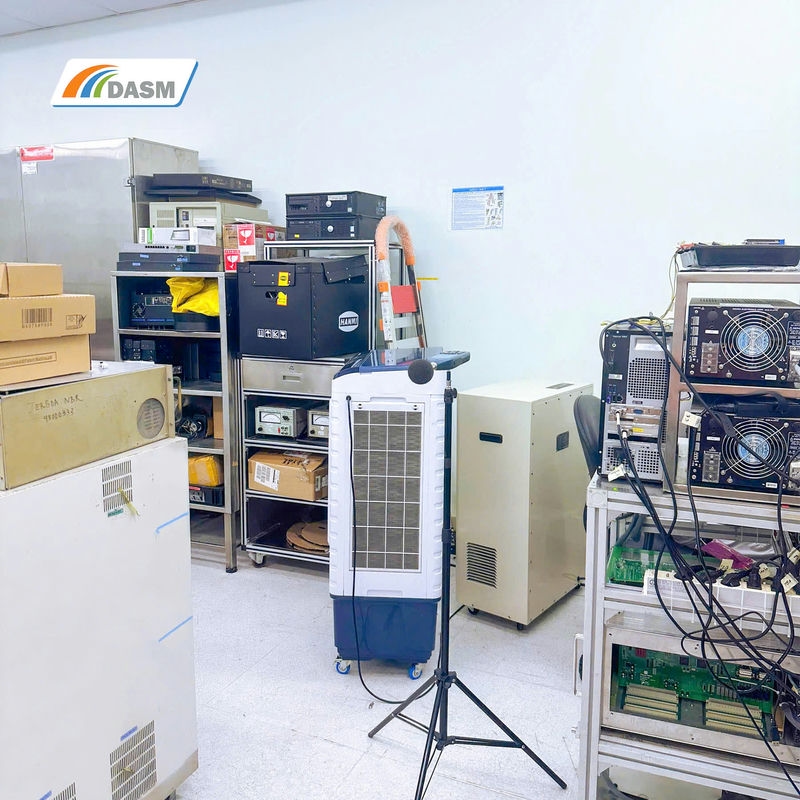
DASM’s proposed acoustic design solutions
Based on the survey and data analysis, DASM proposed a comprehensive acoustic retrofit that met the following technical criteria:
- Soundproof Room Design
The room was upgraded using high-quality acoustic and soundproofing materials, optimizing the absorption coefficient and minimizing unwanted sound transmission. Key materials included:
- Rockwool sound insulation boards
- Multi-layer sound insulation boards
- Specialized soundproof doors
- Acoustic ceiling systems
- Acoustic Enclosure Design for Equipment
Chillers and motors were enclosed in custom-designed acoustic boxes featuring multi-layered absorption and insulation structures, effectively limiting noise propagation to surrounding areas.
- Reverberation Time Optimization
Reverberation time was fine-tuned to meet ISO 3382 standards, ensuring optimal conditions for precise measurements and experiments.
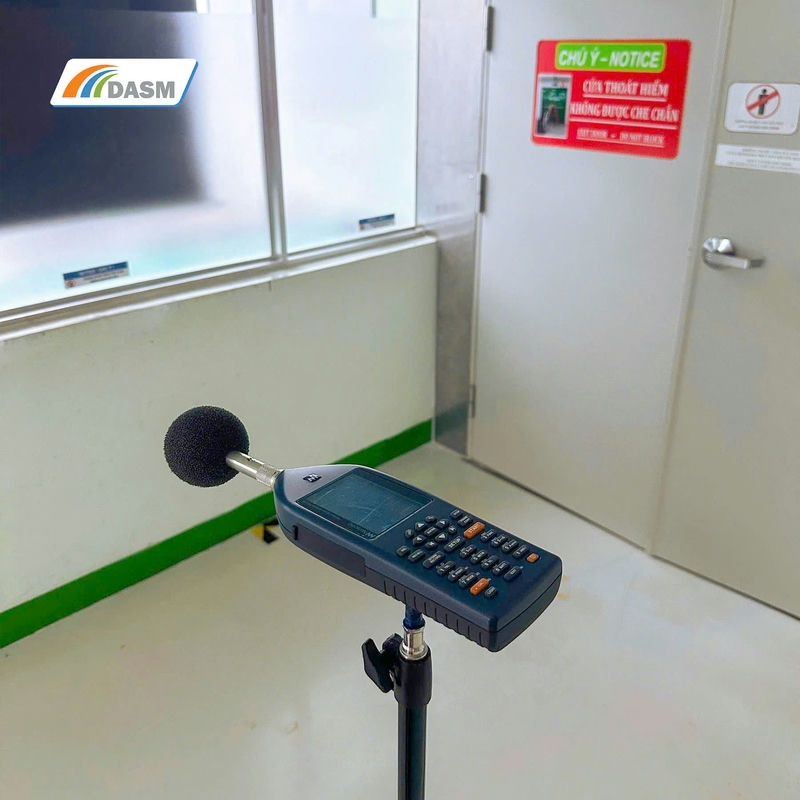
Applied technical standards
The entire survey and acoustic design process complied with globally recognized acoustic standards, including:
ISO 1996 – Description and measurement of environmental noise
ISO 9614 – Determination of sound power levels from noise sources
ISO 717, ISO 12354, ISO 16283 – Evaluation and measurement of building sound insulation
ISO 3382 – Measurement of reverberation time
ISO 16032, ISO 11201 – Measurement of sound pressure levels from equipment
ASHRAE Handbook – Chapter 48 – Noise and vibration control in HVAC systems
NF S31-080, BS 8233:2014, BS 4142:2014 – Acoustic performance and industrial noise assessment guidelines
Business benefits
Upon project completion, the enterprise experienced significant benefits:
A stable acoustic environment, ensuring high accuracy for R&D operations
Background noise levels reduced below thresholds affecting sensitive devices
Minimized mechanical noise interference, enhancing operational efficiency
Full compliance with international standards, ready for technical inspections and audits
DASM – Trusted acoustic partner for noise control
With extensive experience in acoustic projects for high-tech manufacturing plants, clean rooms, and specialized laboratories, DASM is a trusted partner offering:
- Custom acoustic consulting and design
- In-depth noise survey and evaluation
- Implementation of noise control and reverberation treatment solutions
- Assurance of construction quality aligned with ISO, ASHRAE, BS, and NF standards
If your business is looking for solutions in noise control, acoustic design, and compliance with international standards, contact DASM for professional consultation.



